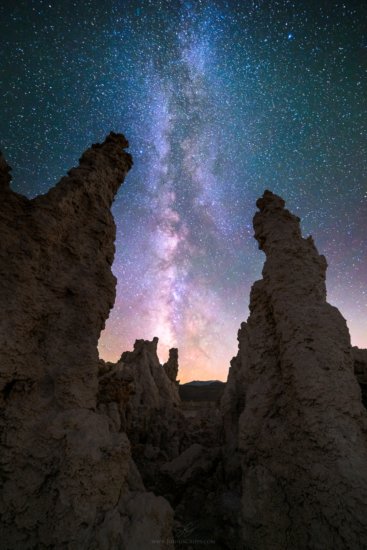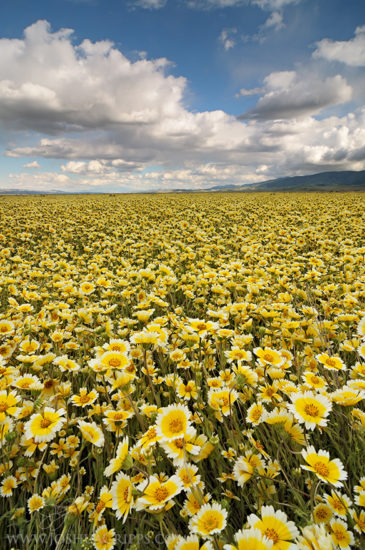Of the three main camera settings (shutter speed, aperture, ISO), ISO in photography the one most shrouded in a fog of pseudo-understanding. Many landscape photographers believe that ISO setting is something you change just because it gets dark outside or because you are stopping down your aperture. While these things might be tangentially related, they’re both cases of correlation, not causation. Nay, nine times out of 10, your ISO in photography should be planted firmly at its lowest.
And the ONLY reason* you should ever change it is this: because you are targeting a specific shutter speed for your photo. Let me walk you through some scenarios to explain what I mean:
Static Landscape Photography
Now, what do I mean by that? For static landscape photography which does not include any moving elements, like a majestic scene with a mountain. Because there’s nothing moving in the scene, the shutter speed in your exposure becomes irrelevant. You can put your ISO at 100, your aperture at whatever you need to get good depth of field, and your shutter speed at whatever gives you an ideal camera exposure. You’re not trying to capture any motion here, so it really doesn’t matter if your shutter speed is 1/10 second, 1 second, or 100 seconds. As long as you pick a shutter speed to give you a good exposure, the outcome is going to be the same. However, I do have to point out that older camera may introduce more noise with super long shutter speeds.
Landscape Photos with Motion
But as soon as landscape photographers encounter motion in their frame, shutter speed becomes an important artistic consideration. And true, to a large extent you can control your shutter speed by manipulating your aperture, but what happens when you can’t? For example, say you’re shooting a field of flowers. There’s a breeze blowing so you know you need to target a relatively fast shutter speed. The problem is, you’ve chosen an in-your-face composition and you need f/16 to get the full depth of field for the scene. At ISO 100 the resulting shutter speed is slow enough that each flower becomes a halo of motion blur. If you open up your aperture to get a quicker shutter then you will lose focus on your foreground flowers. So your only option is to increase your ISO. Which allows you to make a good exposure at a faster shutter speed.
How about another example, the classic case of changing ISO: shooting the Milky Way. Ask a random photographer why you need to change your ISO setting to shoot the Milky Way and that person is likely to say, “because it’s dark out, duh.” Which, while it may be true that it is dark at night, this is absolutely not the specific reason you should change your ISO. After all, even in the dark I can set my camera up at ISO 100, f/8, take an 8-hour exposure, and have that photo come out perfectly exposed. The reason you should change your ISO is because you’re targeting a specific shutter speed. The Milky Way is moving (at least, relative to us) which means, if you want to freeze it in place in your photo, you must use a shutter speed that will do just that. Otherwise it will turn out as a bunch of streaky stars.

Night Photography Exposure – ISO: 6400, [email protected]
Skipping over all the Rule of 500 stuff for shooting stars, let’s just say you need a shutter speed of 30 seconds for your shot in order to freeze the Milky Way in place. If you’re at ISO 100, even if you open up your aperture as wide as it can get, maybe f/2.8, you are likely to need a shutter speed of at least 30 minutes to get an acceptable exposure. Obviously, over that much time your Milky Way is going to look more like Milky Stripes. Since you can’t open your aperture any further, you must change your ISO in photography to achieve your desired shutter speed. By bumping your ISO up six stops to 6400, you can now decrease your shutter speed by those same six stops: 30 min > 15 min > 8 min > 4 min > 2 min > 1 min > 30 sec.
At the end of the day, the rule to change your ISO in photography is straightforward (at least for landscape photographers): leave your ISO setting at its lowest and only change it when you are targeting a specific shutter speed for your photo when you can’t change your aperture.
What do you think? Are there other times when landscape photographers should change their ISO, or does this simple rule cover all the bases? Let me know what you think in the comments!
*Author’s note: Ok, I suppose there are artistic reasons for landscape photographers to change ISO in photography. For example if you want to introduce grain to your image. But, even in this case I believe it’s preferable to use a lower ISO for better image quality and then add the grain in post to your taste.
Visual Wilderness https://ift.tt/3cKBu0k
Sourced by Time Trap Photography sharing the best photography tips, news and tricks throughout the industry. Time Trap Photography is dedicated to freezing those special moments in life that can be revisited and admired for generations to come. - Shannon Bourque
Please visit our main site for booking availability and rates.

Receive valuable industry knowledge delivered free to your email each day.










No comments:
Post a Comment
Thank you so much for your comment. A moderator will review and approve all relevant posts. We appreciate your support and encourage you to stay with us by subscribing to our email updates. Where you can easily pick and choose what photography subjects interests you. Subscription link: http://bit.ly/photo-sub